02 —
Stuck inside of Mobile
Gerard Taylor
Interview with
Gerard Taylor
by Jordan Took
Gerard Taylor has made his name as a multifaceted designer, with work spanning over four decades across furniture, product design and interior architecture. For the last 15 years, he has worked as the creative director of Orangebox in London.

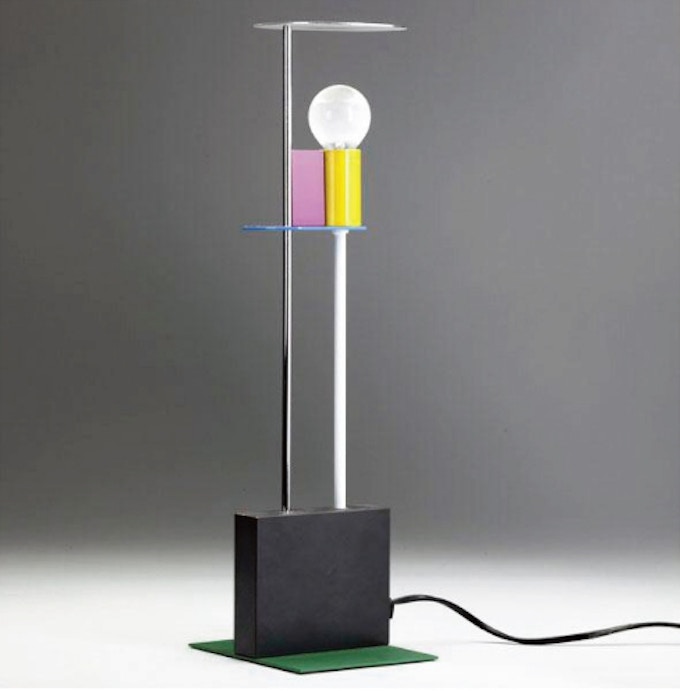
Piccadilly Lamp by Gerard Taylor for Memphis
His education began at the Glasgow School of Art (GSA) where he studied Product Design before receiving a Masters in Industrial Design from the Royal College of Art (RCA), London, where he studied alongside a generation of influential designers including Daniel Weil and Jasper Morrison.
Upon graduation, eclectic architect and industrial designer Ettore Sottsass invited Taylor to join Sottsass Associati in Milan, where he worked with renowned brands including Knoll, Artemide, Fiorucci, Espirit and Phillips.
Many of Taylor's pieces from this period are highly coveted, appearing in the Design Museum, London and were part of David Bowie’s private art and design collection which was auctioned in Sotheby’s ground breaking sale of November 2016.
Taylor returned to London in 1986, establishing a studio with fellow RCA alumnus Daniel Wiel, and later setting up his own creative consultancy, Gerard Taylor Design. More recently he has collaborated with numerous clients and manufacturers including Orla Kiely, Selfridges, Knoll, and Bernhardt Design.
01—
How did a boy from Belshill develop an interest in Art & Design?
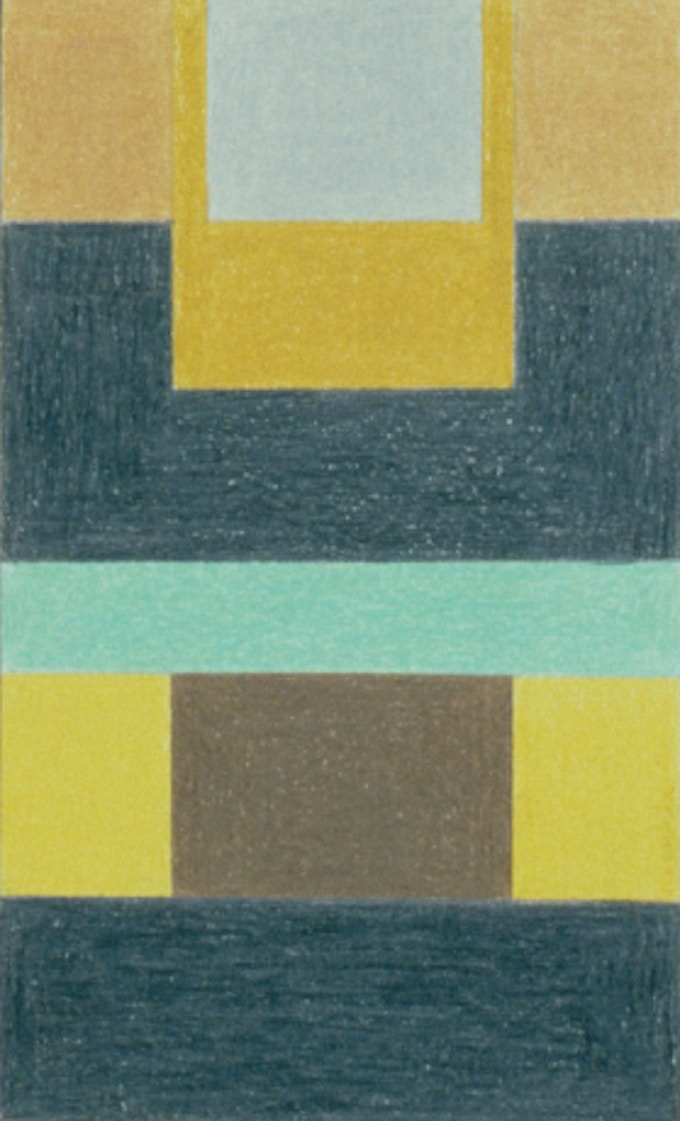
As soon as Taylor arrived in Milan he was asked to consider designing rugs for the second Memphis collection. These are some of the drawings he produced.
Design is a vocation, it’s something within you. Everyone starts out with the ability to engage and record the world visually, but probably for most people, they lose the confidence or perhaps they form a disinterest.
I think, if you are a visual person, that doesn’t happen. It stays with you – anyone can look back through their childhood and see how critically important the visual world was to them, how much more sensitive they were to recording things with their eyes than being motivated by literature and reading or audio, and I think that’s a universal truth. I think that’s why people that have practised and are good at it – it’s not a forced hand, it’s a genuine hand; it’s authentic, it’s true to their personality and what they’re about. What’s critically important if you have that within you, is that you find teachers who engage with you, and nurture that. That’s what I had, even through A levels or Higher Art, the people teaching me were artists who knew what they were talking about and were able to nurture the skills that you needed to learn. That’s why I always say to young people ‘don’t tolerate mediocre teachers’, – that period of transition from being young to becoming mature is very, very short and it’s incredibly important that good people are around you and help you.
I was lucky, I grew up in a period when the art schools in the UK were phenomenal institutions. When I went to art school, the first year foundation was critical. I actually thought I was going to be an artist until I saw the talent that you needed to be a real artist. The design school was a fabulous vehicle for opening up all of the other design disciplines: graphic design, textile design, furniture design, industrial design and product design. That’s what was great about it, because through your foundation year, which is actually a very short window, you have to make a decision as to what is the thing you are going to spend the rest of your life in.
There’s a lovely story that David Hockney talks about when he was at the Royal College and some fellow students were laughing at his work and his riposte was, ‘well if I drew as badly as that, I don’t think I would be as assertive as you are’. Even at fourteen, Hockney was a prodigious drafts-person – no one taught him that, and in the making of paintings he’s like a Picasso of our time.
02—
Your GSA degree show was controversial, can you explain more about it?
I had a fantastic teacher at the GSA called Julian Gibb, who was a very refined and highly-respected graphic designer. He ran the furniture product school and was incredibly influential in saying to me ‘look, you are really quite talented, I think you should apply to the RCA to do an MA degree’. I hadn’t thought about it, but I applied and got in.
The degree show was in May, so in March I knew that I was going to the RCA. The degree show at GSA was not a coming out, it was a stop on the journey. I had prepared a portfolio for the Royal College, so I hung that up on the walls around [me], and then in the middle I destroyed everything that I had done through my degree. I cut it all up into small pieces. I was basically saying ‘look, don’t judge me for what you see because I’m only half way through my education’. So yes, I was quite assertive. If I look back now I feel really sad for young people today because I actually got funding to study my discipline for seven years. That’s like a surgeon or doing a PhD in maths!
This is for a cassette radio where the handle folded down to sit below, establishing a new relationship with the object when sitting on a table.

03—
You went to London for a Masters in industrial design, how did you find going from Glasgow to London? How did if affect your outlook on design & life?
I almost left London after six months because I was so disappointed by the quality of my fellow students. I thought I was going into a centre of excellence and the RCA at that time had started opening itself up to foreign students for the income that they would bring in. A lot of them weren’t good enough to be in that institution, so I resented that.
I didn’t think there was enough of that Scottish ballsy-ness, but then slowly I started to discover other people in other departments and realised, that actually, it was a great institution with brilliant people. But the funny thing is I never got as good, probably because the standard set by Julian Gibb was so high in Glasgow, I was always disappointed by the tutors at the College – they never matched up to the rigour with which he would look at what you were doing and engage in conversations with you.
So the biggest influence then becomes your peers, bouncing off them through your projects. That’s where I met Daniel Weil – we were fellow students and Ross Lovegrove was the year below us. There was a good team of designers there. Daniel and I formed a kind of mutual beneficial partnership as it were, encouraging each other.
Drawings for table lights, which are the first designs Taylor produced after arriving in Milan. Many design options would be submitted with only some produced, which in this case were the Piccadilly and Glasgow lights.
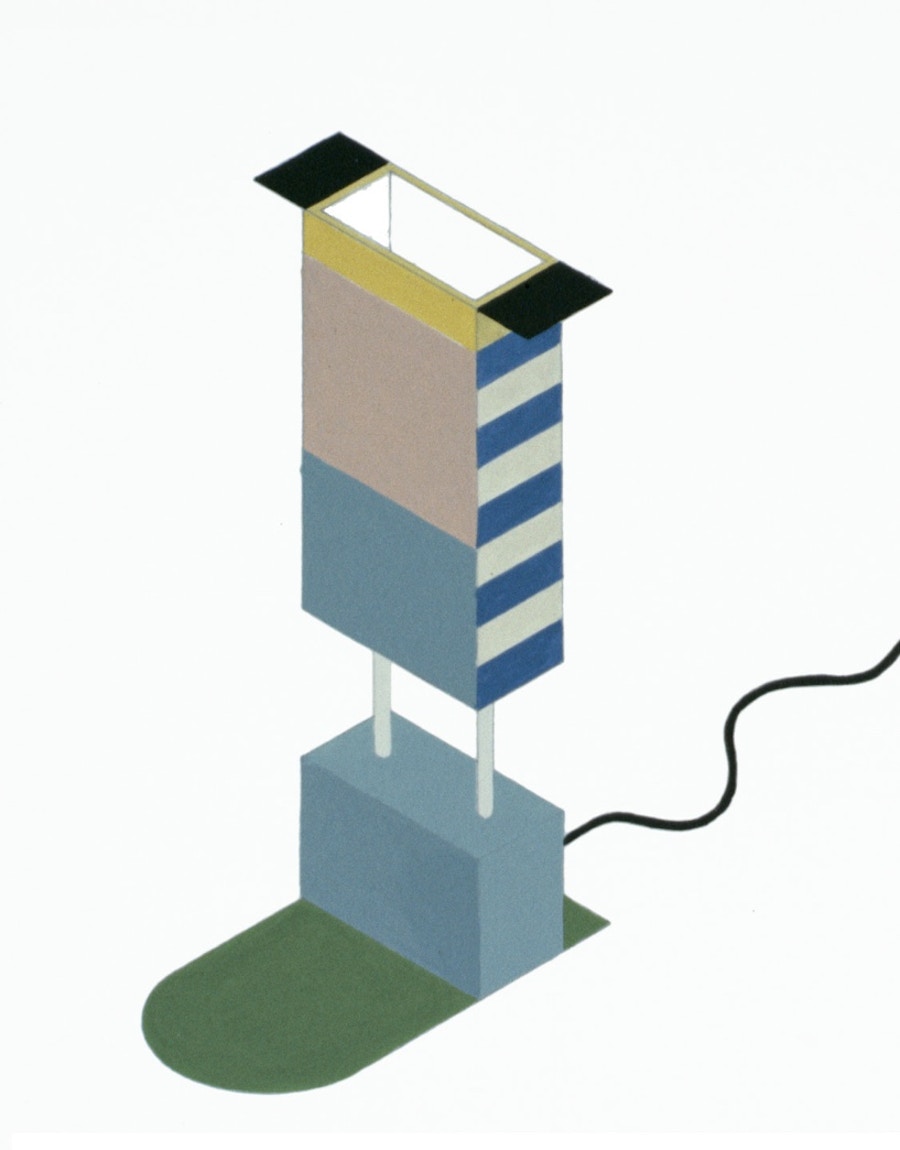
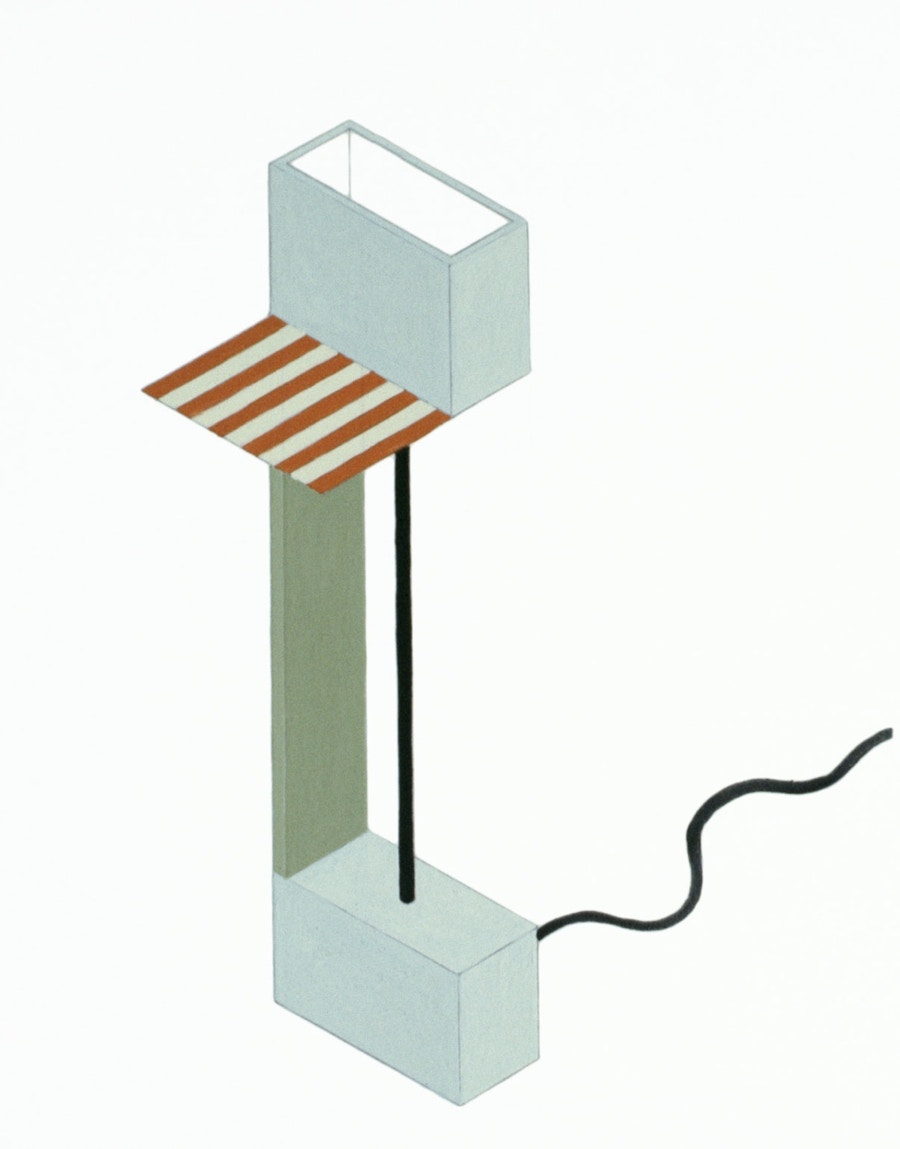


Ettore Sotsass was always a hero, even back in Glasgow. He epitomised everything that I thought design should be about. The biggest thing was that he always had a dual mix between being a designer for industry and a designer for himself.
At the RCA, the degree show is a big event, so at that stage I showed all of the objects that I had done. Ettore Sotsass was always a hero, even back in Glasgow. He epitomised everything that I thought design should be about. The biggest thing was that he always had a dual mix between being a designer for industry and a designer for himself. He was one of the head designers for Olivetti, who at that time were the Apple of their day. They were the ones producing the coolest product design on the planet. Even the graphic design, if you look at Olivetti’s graphic design through that period they were working with Seymour Chwast and Milton Glaser. They were doing the best graphic design because they had a culture – at both Olivetti, but also within the famous Italian design culture – they knew the power of design.
The way he [Sotsass] spoke about design, I thought ‘yeah, that’s what I think design should be about’. Again, probably because I was a ballsy Scotsman, I thought ‘right, I need to go and work with Ettore, this is where I should be working’.
I met him the year before graduating in London and showed him my work. He was just about to form a new design company called Sotsass Associati and he said ‘why not come out and see us’. I had really good skills, and this is what I say to the young people who come in and work with me now – you have to have trade-able skills. This is before technology, but I could draw beautifully, I understood things technically, I could take photographs, I could build impeccable models, I knew how to process stuff. I was really lucky during my years at the Royal College, every summer I was able to work with the BBC in the set design department, which was a great education about process.
The Designer of Programmes would have maybe two assistants working with him and he would be designing it, but you would be running around organising everything. I had great experiences working on an opera called Oranges are not the Only Fruit, with a brilliant designer. I also worked on a series of the Two Ronnies – they were the powerhouse of comedy at that time and we’d be away on location doing all of the work for the series.
So that helped you to move quickly and understand the idea that you have to have something done by 9 o’clock tomorrow morning, otherwise it would be a complete waste of time. In hindsight, I was incredibly lucky that I learned the processing skills that I did. So, when I went to Milan, they said ‘yeah, you’re a good designer, we like your work; we like your attitude and also you’ve got skills that will be really useful in the studio’, – so I got into Sotsass’s office.
I was in Milan and then Memphis. The first year of Memphis was the year of my degree show, so I already had a huge portfolio of products, and as soon as I went over, the generosity of the Italians really hit me. My first night in Milan, I was invited to Ettore’s house, it was the year they won the World Cup. Ettore was a big Juventus fan – he was hysterical when they won the cup, he was screaming and bouncing off the walls and the other guys had to hold him on the floor in case he injured himself.
That night we went out into Milan and it was mayhem. Milan went nuts! So that was my introduction to Italy, and I thought ‘this is great, I like the exuberance of these people’. But also, what I learned from them was their generosity. He was generous, but you had to work, you had to achieve good things. Ettore invited me to be a Memphis designer, we would show our work and then collectively everyone would look at all of the drawings and say, ‘well I think we should do this one, and this one’ etc.
04—
Sketching and drawing is a big part of your process. Do you still sketch out your initial ideas?
If I don’t draw I get withdrawal symptoms. I can judge a good week by how many hours I’ve been able to sit down and draw.
05—
Do you think technology has affected that at all?
I studied product furniture design and worked in interior set design every summer during my time at RCA. For my degree show I did the set design for a Shakespeare’s Timon of Athens as part of my product show. When I went to Italy they saw me as a designer – they didn’t distinguish between interior or furniture – for them it was all the same. You’re either good enough to be able to flip between the two disciplines, or you’re not.
At the first inkling of interior design through those summers at the BBC I had the confidence enough to start, so I actually started working within product/furniture design and on interior design. A few years ago, I was working on a project with really good structural engineers and they had a process when they took graduates on, they would not let them use computers for the first year. They forced them to draw structural detailing by hand, because they believed only through that could they understand how things work and lean on each other structurally.
A great structural engineer is like a great anything else – it’s what he doesn’t do that makes him a great structural engineer, because he is able to accomplish a lot with less. They have rigour and confidence to take that risk. I think technology is a double-edged sword. You can make things look quite accomplished really quickly, but I also think that’s a falsehood. Even now everything I do moves in cyclical models. I’m doing some things for my own house just now and I physically stand away from the desk and measure it on the wall – I know exactly what 1200 is, but I actually still measure in three dimensions – that’s what you do!
It’s a difficult one, because I also believe we’re moving into a future quite soon where a lot of design will be achieved by algorithms anyway, and designers will be replaced by technology to a certain degree – like you could feed in 30 models for a chair and then output a mix of all of those the same way that you do with journalism. Look at tech companies like Narrative Science with technology such as Quill which they describe as ‘humanizing data like never before, with natural language technologies that transform data into plain-English stories’ There’s lots of pieces appearing as journalism now which is pure algorithmic work, it's not been done by a journalist. I think we will move into the future very quickly…

Two larger furniture pieces for Memphis. Clockwise from top left; a hall unit with mirror and display cabinet.
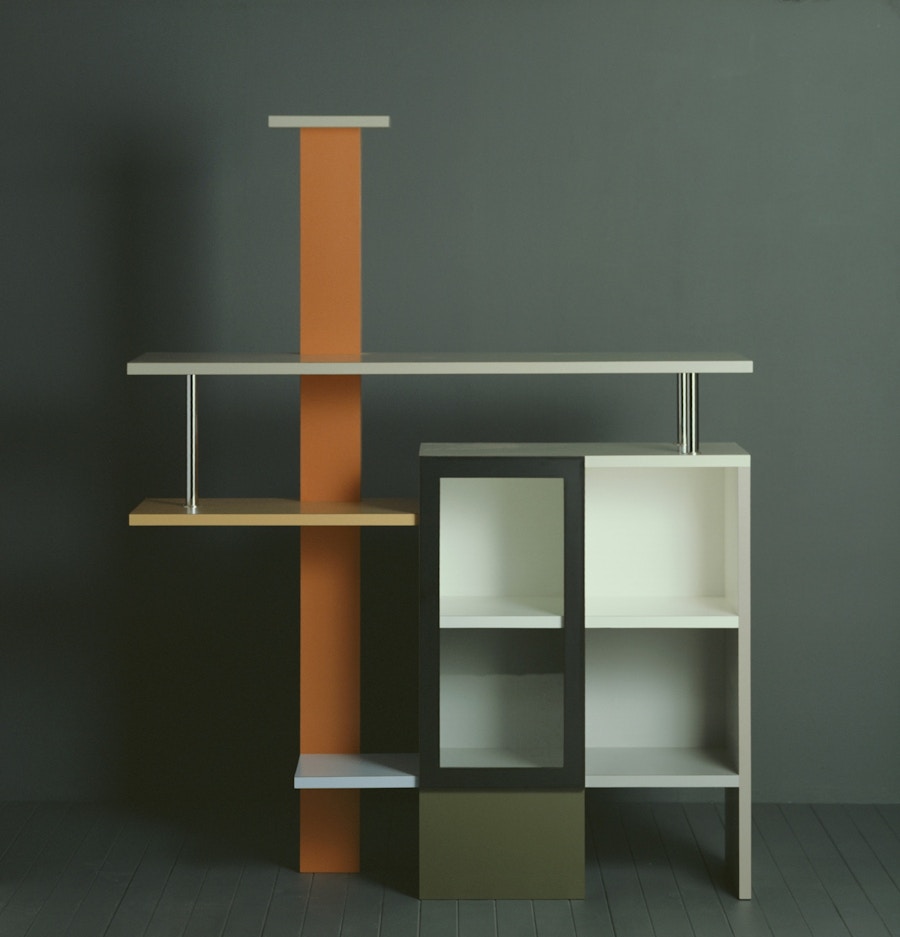
06—
Your new book is named That's not a stick, that's a log. How does this apply to new technologies as a designer?
These examples illustrate some of the literature for recent products designed by Russell Warren-Fisher, showing the diverse communication literature produced by Orangebox.

My basic belief with technology is 50% of it is fabulous and 50% of it is profoundly destructive, and that’s to do with all technology, (not in medicine and in science), but I’m talking about the social world of digital technology. What’s good for me is that everything I do now is about the story, not the piece in itself. I think we live in a world of too much design – there’s too many good chairs, there’s too many good lights, there’s too many good desks.
I’ve spent the last 20 years with Orangebox building the brand, and to me you sell stories, you sell narratives, you do not sell products. We engage with each other through stories, not through a chair per se. A chair is a means of realising the story, it’s the words in the story, but it’s the story that’s more important than anything else. I don’t think algorithms will beat us at that, so for me that’s the future of design, it's the strategy of using technology to tell engaging stories.
07—
Your work spans across furniture design to environmental and product design. Are there any areas you would still like to explore? What’s the importance of fluidity between disciplines?
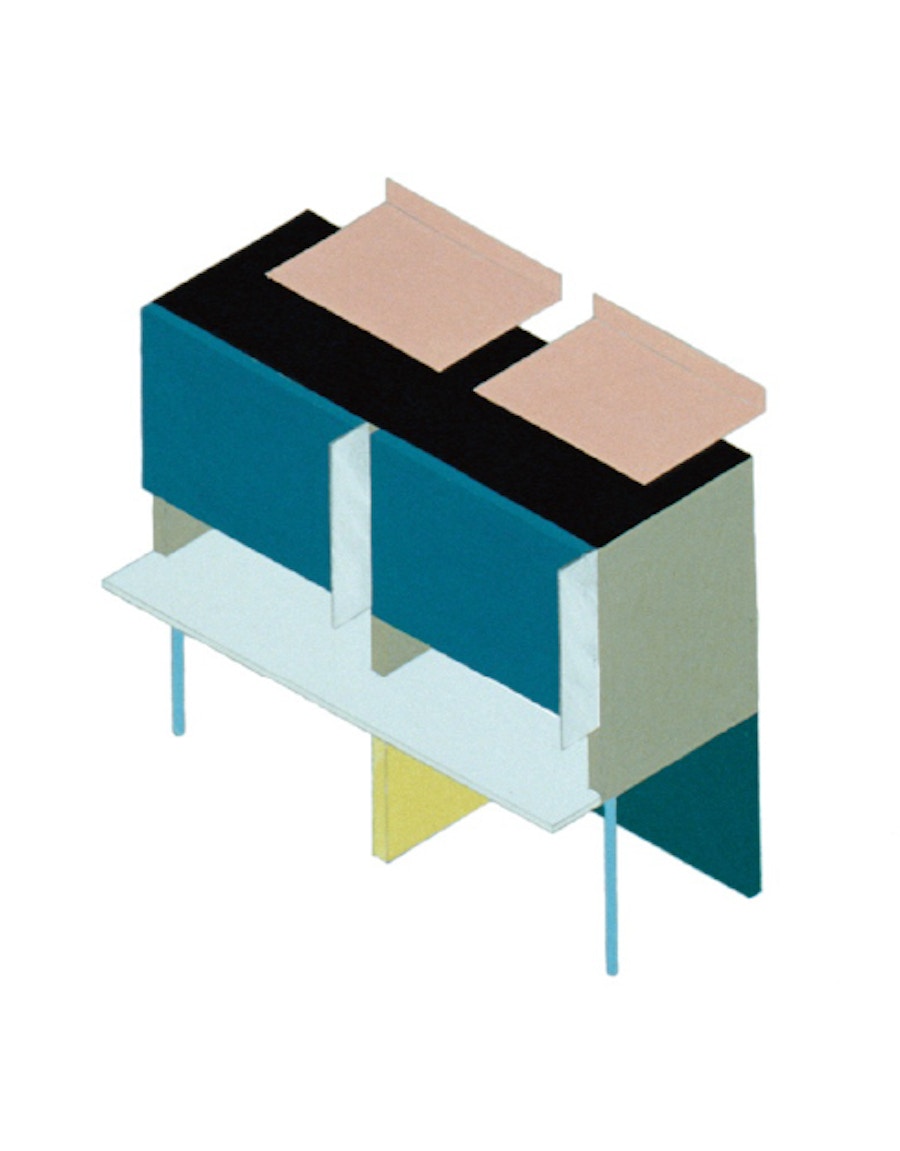
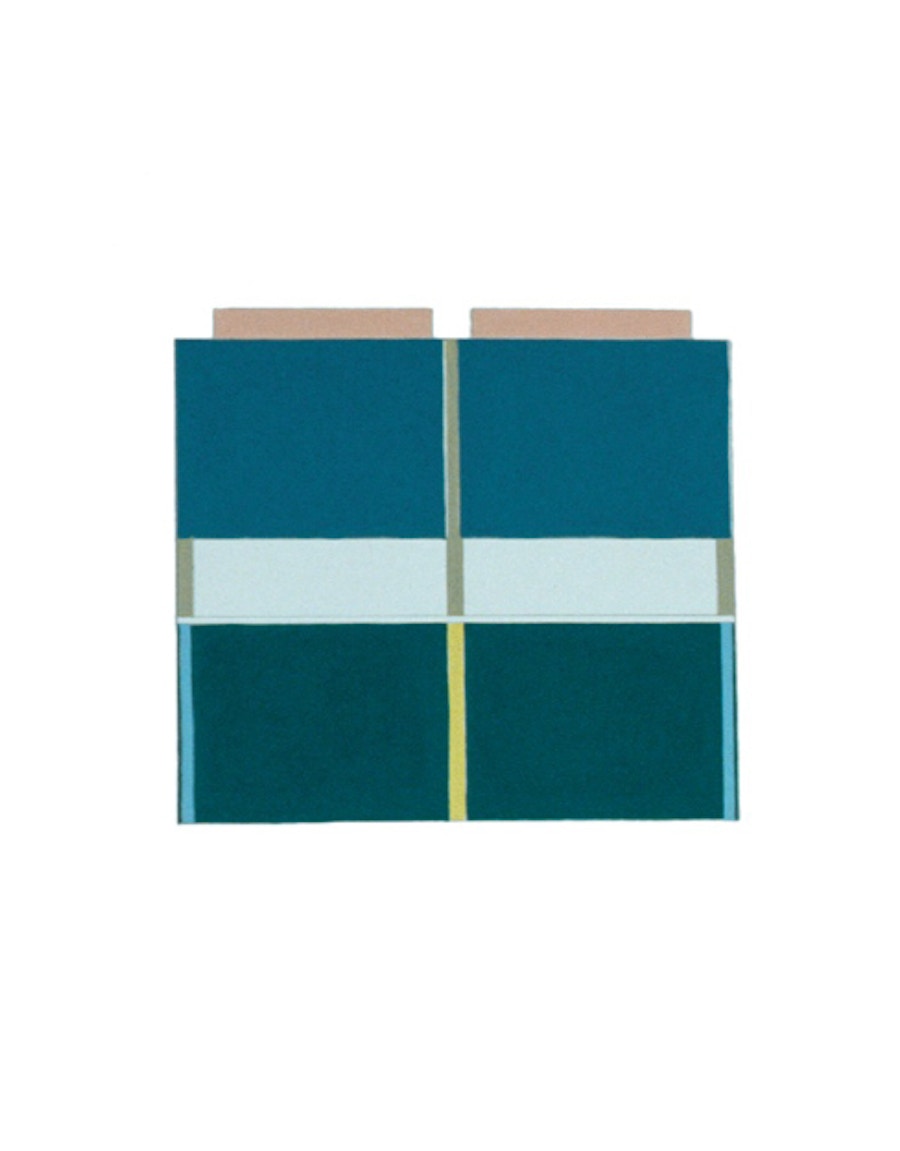
The designer has always to work for themselves, because your own vision has to go way beyond what the client is asking for. You always have to be pushing yourself to do what you think is interesting, and then hopefully some of it will engage with the client.
I would just be happy to spend the rest of my career designing chairs or furniture. As you get older you become a little bit more intrigued, because you’ve already achieved a lot, you’ve already done a lot of design, and I think there’s a really interesting game of just looking, and I’ve always done that.
I remember a friend who sadly died in Milan, James Irvine, who joined Sottsass after me, just as I had left to come back to London. He said ‘Jesus, when you design, you don’t just design one chair, you design
40 chairs!’. I’ve always had this tendency to not do just one thing. I believe a designer should never work for their client, they have to work for themselves. They have to serve their client, they have to be rigorous and professional, but design is a continuous process, so if you design 40 chairs and the client produces one, the details and ideas floating around all of those other products and good design is a continuous process.
You might have thought of something five years ago – it didn’t happen then, but you’re able to work it in now. A lot of the guys who work with me now struggle with that idea: ‘why are we doing 40 chairs, we only have to do two?’, and my analogy is: when you shoot a movie, you shoot five hours and cut it down to an hour and a half, it’s the nature of the process. Design is no different to making a movie. That’s why I’m saying the designer has always to work for themselves, because your own vision has to go way beyond what the client is asking for. You always have to be pushing yourself to do what you think is interesting, and then hopefully some of it will engage with the client. Very often it doesn’t – I’ve designed some very successful products with Orangebox, but I’ve also designed some unsuccessful products and it comes with the patch, because if you’re trying to do new things, it’s a test.
I agree in that respect with Steve Jobs – he had a disdain for this idea of going out and holding a clinic and asking people what they want. His view was always ‘how could people tell you what they need, when they don’t know what is new?’ If you read Steve Jobs’ biography, it’s very accomplished in setting out the process of that. It’s difficult, because designers have to be incredibly confident, and I think a lot of design isn’t. An awful lot of design talks to itself out of frustration of not being able to engage with industry. This saddens me – I think you’re either an artist or a designer. If you’re an artist then it’s your world, it’s your studio; you do what you want, you do what you think is important and then the world will either accept it or not. A designer is part of a team, like a movie, it only comes to fruition because you have a cinematographer; you have an editor, you have a producer, you have a director, you have lighting, camera men, costume, all working together to achieve a project.
That’s what I like about design. I like the fact that it’s a big team dynamic and I think an awful lot of young designers shy away from that, maybe because of technology – they want to achieve things quickly. Good design often can't be achieved quickly, it comes about through a long painful process, and certainly with Orangebox – when we design products – you’re talking about a three year cycle. By the time something comes to market, it will have left the studio three years previously. If you were investing the best part of one million pounds into an office chair, it takes about a year just to test the bloody thing, which is something that I worry [that] young people struggle with. I think technology has the ability to make you think things should be achieved instantaneously.
I hate photorealism – the computer work that we do in the studio, I always try to make look more like watercolour drawings, perhaps going back to Mackintosh, the flat elevation. If you look at his furniture drawings, where he’s drawing a front view, side view – it describes the chair perfectly. You can give that into a workshop and a good craftsman can build from that watercolour drawing. I like that idea of not showing the client immediately what it is going to look like, I think you have to struggle a little bit. Things change as you develop, you realise it’s too thick, it’s too thin; it’s too high, it needs to be thicker, the leg doesn’t work, you need a different kind of sculptural leg to work with that piece of upholstery etc.
08—
At what point does art become design and vice versa? Have the boundaries been blurred? Do design and art have to support each other?
It’s to do with greed really. I think there’s a lot of greediness around in the world and people crash into other people’s disciplines. My first love is art, I’ve spent my life looking at art, I take great pleasure in looking at art. Art is many many different things, from the delight of looking at a painting by Hockney, to seeing a piece of abstract sculpture that’s quite challenging and difficult.
One of the best pieces that I remember [was] on a trip to Iceland, there was a little private museum in Reykjavik and in one of the rooms there was an inflatable paddling pool – like the kind kids play in filled with water, filled with very expensive porcelain from Germany, and a little motor which caused a disturbance in the water, causing the porcelain bowls to crash into each other. The music that came from it, the chant of it, was profoundly beautiful. For me that was art, it was never design, even though the components of it were in a sense the products of design – the paddling pool was from a toy manufacturer, the porcelain was from a very refined potter… and that’s what art does, art makes connections to allow you to see things afresh. Design can’t do that. An iPhone could never do that, an iPhone is a tool. So I think the difference between the iPhone and that paddling pool is that they’re different continents – they’re connected by a sea but they’re different continents. And to me that’s the difference between art and design.
I think sometimes a lot of people want to take design into art, a lot of people want to take art into design. Art into design is about greed, but design into art is because it’s too difficult, I think, to engage it with the dynamics of the processes of design – to say ‘OK fine, I’ll do this myself’.
A small table for displaying fruit. Designed by Gerard Taylor & Daniel Weil for Anthologie Quartett.
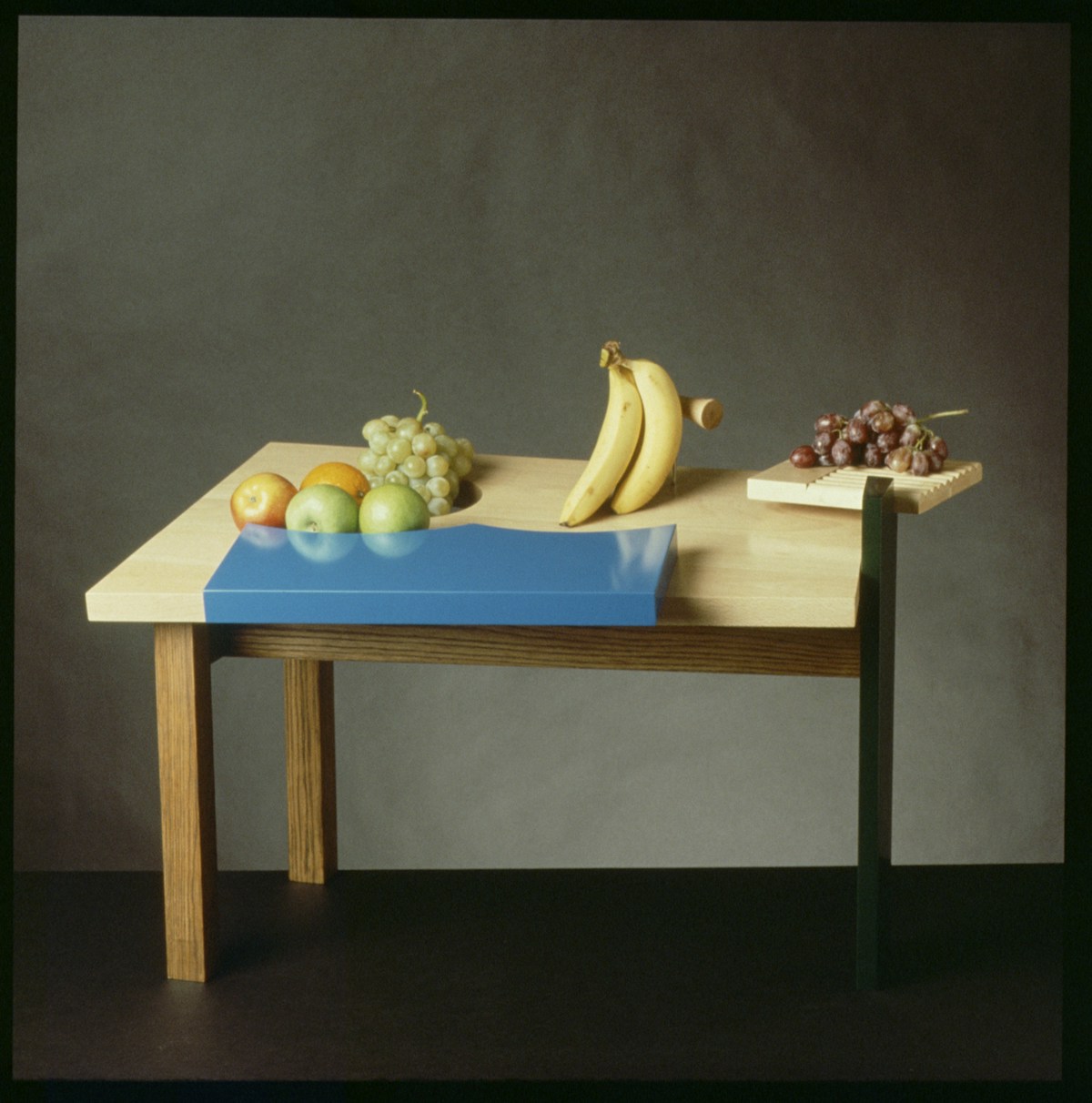
09—
Who are some of your biggest influences?
Find out more —
gerardtaylor.com
All good design and all good art is an influence, there’s not one there’s gazillions. In graphic design, one of my earliest influences was Milton Glaser and the Push Pin Studios in New York. I went and visited him – it wasn’t a big consultancy, it was a small office with I think eight or ten people and he had some really great clients and he just quietly got on with it. What I always loved was that he was as good an artist as he was a designer. His watercolour drawings, which he used a lot in his graphic work, for me were always majestic, the technical accomplishment. To go back to the narrative, you will never see something slight from Milton Glaser, everything had a narrative and a richness to it. So, any design that has a richness to it, I will respond to whether it’s from the 60s, 70s, or work being produced now.
I’m not interested in the star design system because I think there are loads of brilliant designers doing brilliant work without winning awards or going to award dinners. I think that’s a falsehood of our time, and I’m really sorry that so many young designers believe that it’s the means to the end – it’s not. I’ve had lots of people come through my studio who wanted to go off to Milan and spend a lot of their savings, or parents' savings, to produce a show in Milan, with the belief that a furniture manufacturer might come and go ‘oh this is the best piece of furniture we’ve ever seen, we must produce it’ – it doesn’t work like that.
